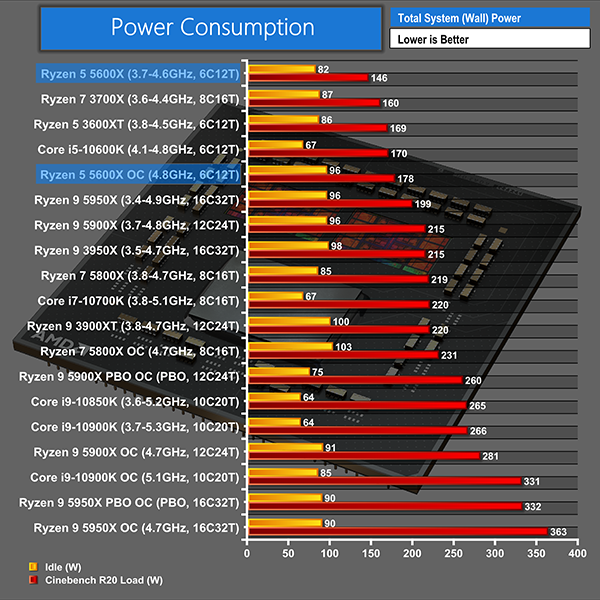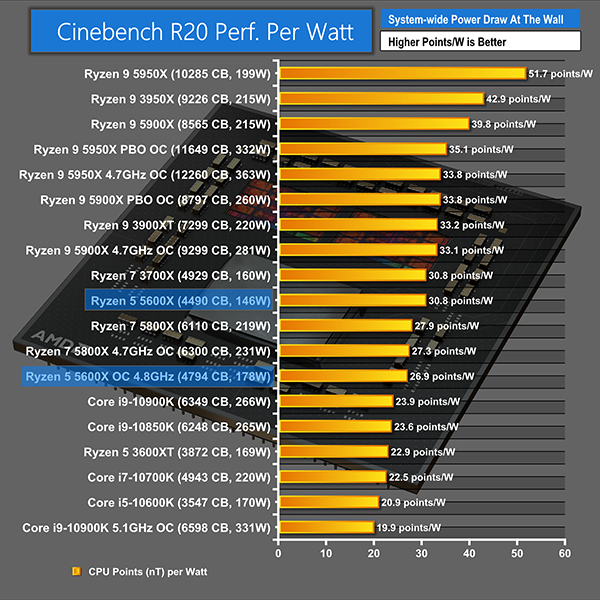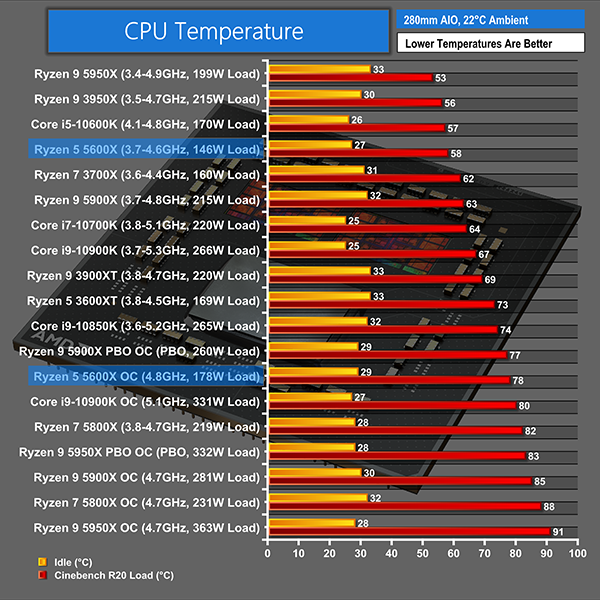We leave the system to idle on the Windows 10 desktop before taking a power draw reading. For CPU load results, we read the power draw while producing five minutes' worth of loading in the Cinebench R20 nT rendering test.
The power consumption of our entire test system (at the wall) is shown in the chart. The same test parameters are used for temperature readings.
Power Consumption
Power draw readings are accurate to around +/-5W under heavy load due to instantaneous fluctuations in the value. We use a Titanium-rated Seasonic 1000W Prime PSU.
Power consumption is absolutely superb from the 65W TDP Ryzen 5 5600X. Six Zen 3 cores with a power budget of 76W makes for a very light energy requirement. The wall draw levels are more than 20W lower than the Ryzen 5 3600XT and Core i5-10600K competitors when loaded at stock clocks.
Overclocking increased the load power draw by a little over 30W. But this sub-180W wall reading is still easily tolerable even with modest cooling and motherboard VRM hardware.
Performance per Watt
The Ryzen 5 5600X actually does reasonably well in the Cinebench-based performance per Watt chart. Despite a two-core deficit versus the 3700X, AMD’s new Ryzen 5 5600X actually manages to match its efficiency.
Points per Watt are far greater for the Zen 3 5600X versus its Core i5-10600K and Ryzen 5 3600XT competitors. AMD’s chosen 65W TDP for the 5600X looks to deliver excellent efficiency balance.
Temperatures
Temperature recordings were taken using the Fractal Celsius+ S28 Prisma 280mm AIO CPU cooler at full fan and pump speed. Ambient temperatures were around 22°C.
Out of the box temperatures using the same premium 280mm AIO cooler as with all other testing are sub-60C under load and are easy to handle. Even with cheaper coolers, we would have no worries about thermals for the Ryzen 5 5600X. That’s especially true when running the stock Precision Boost or automatic Precision Boost Overdrive settings that adjust frequency and voltage based on temperature readings.
Overclocking pushed the chip close to 80C with our unoptimized voltage setting. Again, this is no cause for concern with a premium AIO cooler but will start to get a little toasty on small and budget air heatsinks.
Be sure to check out our sponsors store EKWB here
 KitGuru KitGuru.net – Tech News | Hardware News | Hardware Reviews | IOS | Mobile | Gaming | Graphics Cards
KitGuru KitGuru.net – Tech News | Hardware News | Hardware Reviews | IOS | Mobile | Gaming | Graphics Cards





